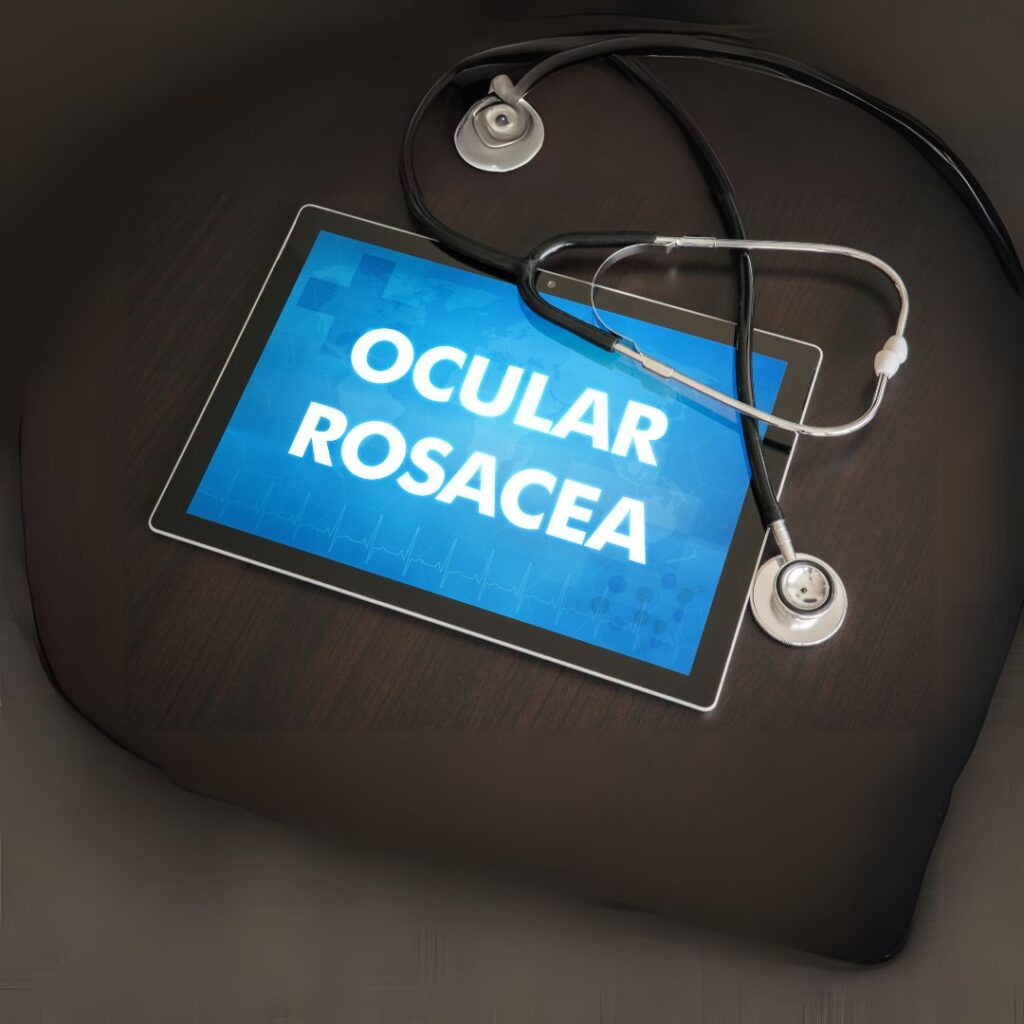Understanding Ocular Rosacea: Symptoms, Causes, and Treatments
Ocular rosacea is a subtype of rosacea, a chronic inflammatory skin condition. While rosacea typically affects the facial skin, characterized by redness, visible blood vessels, and acne-like breakouts, ocular rosacea specifically impacts the eyes. This condition can be both debilitating and challenging to manage, significantly affecting quality of life if not properly addressed.
What is Ocular Rosacea?
Ocular rosacea is a form of rosacea that affects the eyes and the surrounding tissues, including the eyelids. It is characterized by inflammation and irritation of the ocular surfaces, and it often presents with symptoms similar to other eye conditions, which can make it difficult to diagnose. Unlike its cutaneous counterpart, ocular rosacea does not always present with visible skin symptoms.
Who Does It Primarily Affect?
Ocular rosacea primarily affects adults, and it often presents in people who also experience facial rosacea. It tends to be more common in individuals between the ages of 30 and 60, and women may be slightly more prone to developing the condition than men. However, it can occur in anyone with rosacea, regardless of age or gender. It’s also worth noting that those with a fair complexion and a family history of rosacea may be at higher risk.
Symptoms of Ocular Rosacea
The symptoms of ocular rosacea can range from mild to severe and may include:
- Redness of the Eyes: Persistent eye redness, similar to conjunctivitis.
- Burning Sensation: A burning or stinging feeling in the eyes.
- Dryness: Chronic dryness or a gritty sensation, often accompanied by excessive tearing.
- Itching: Itchy or irritated eyes.
- Swelling: Swelling of the eyelids or around the eyes.
- Sensitivity to Light: Increased sensitivity to light, known as photophobia.
- Blurred Vision: Episodes of blurred vision or difficulty focusing.
- Crusting: Crusty deposits or mucus on the eyelids, especially upon waking.
- Eye Discharge: Increased discharge from the eyes.
- Eyelid Problems: Conditions such as blepharitis, which is inflammation of the eyelid margins.
Causes and Risk Factors
The exact cause of ocular rosacea is not fully understood, but several factors may contribute:
- Inflammation: Chronic inflammation of the ocular surface and eyelids.
- Demodex Mites: Overgrowth of Demodex mites, which are tiny organisms that live on the skin, may play a role.
- Genetics: A family history of rosacea or other skin conditions may increase susceptibility.
- Environmental Triggers: Exposure to environmental factors like wind, sun, or hot temperatures may exacerbate symptoms.
- Lifestyle Factors: Factors such as excessive alcohol consumption, spicy foods, and stress may also trigger or worsen symptoms.
Complications
If left untreated, ocular rosacea can lead to several complications:
- Corneal Damage: Chronic inflammation can lead to corneal damage or ulceration, affecting vision.
- Chronic Blepharitis: Persistent eyelid inflammation may lead to chronic blepharitis, which can be difficult to manage.
- Reduced Quality of Life: Persistent discomfort and visual disturbances can significantly affect daily activities and quality of life.
Treatments
While there is no cure for ocular rosacea, several treatments can help manage symptoms and prevent complications:
- Medications:
- Topical Antibiotics: Medications such as metronidazole or azelaic acid may reduce inflammation.
- Oral Antibiotics: Tetracyclines like doxycycline can be effective in reducing inflammation and bacterial load.
- Anti-inflammatory Medications: Corticosteroids may be prescribed for severe inflammation but are generally used with caution.
- Artificial Tears: Over-the-counter artificial tears or lubricating eye drops can alleviate dryness and irritation.
- Warm Compresses: Applying warm compresses to the eyes can help unclog blocked meibomian glands and reduce inflammation.
- Lid Hygiene: Regular cleaning of the eyelids with lid scrub pads or diluted baby shampoo can help manage blepharitis and reduce symptoms.
- Avoid Triggers: Identifying and avoiding triggers such as hot or spicy foods, alcohol, and excessive sun exposure can help manage flare-ups.
- Laser Therapy: In some cases, laser therapy might be used to treat visible blood vessels and reduce redness, although this is more common for facial rosacea.
Prevention and Management
Managing ocular rosacea involves both medical treatment and lifestyle adjustments:
- Regular Eye Exams: Regular check-ups with an eye specialist can help monitor and manage the condition effectively.
- Consistent Skincare: Maintaining a gentle skincare routine and using non-irritating, hypoallergenic products can help reduce facial rosacea symptoms, which may indirectly benefit ocular rosacea.
- Stress Management: Stress reduction techniques such as mindfulness, yoga, or exercise may help reduce flare-ups.
Conclusion
Ocular rosacea is a complex condition that requires careful management to prevent complications and improve quality of life. By understanding the symptoms, causes, and treatment options, individuals can work with their healthcare providers to develop an effective treatment plan. While there is no cure, a combination of medical treatment, lifestyle adjustments, and regular monitoring can significantly improve symptoms and help maintain eye health. If you suspect you have ocular rosacea, it’s crucial to seek medical advice from your eye doctor to ensure proper diagnosis and treatment.


